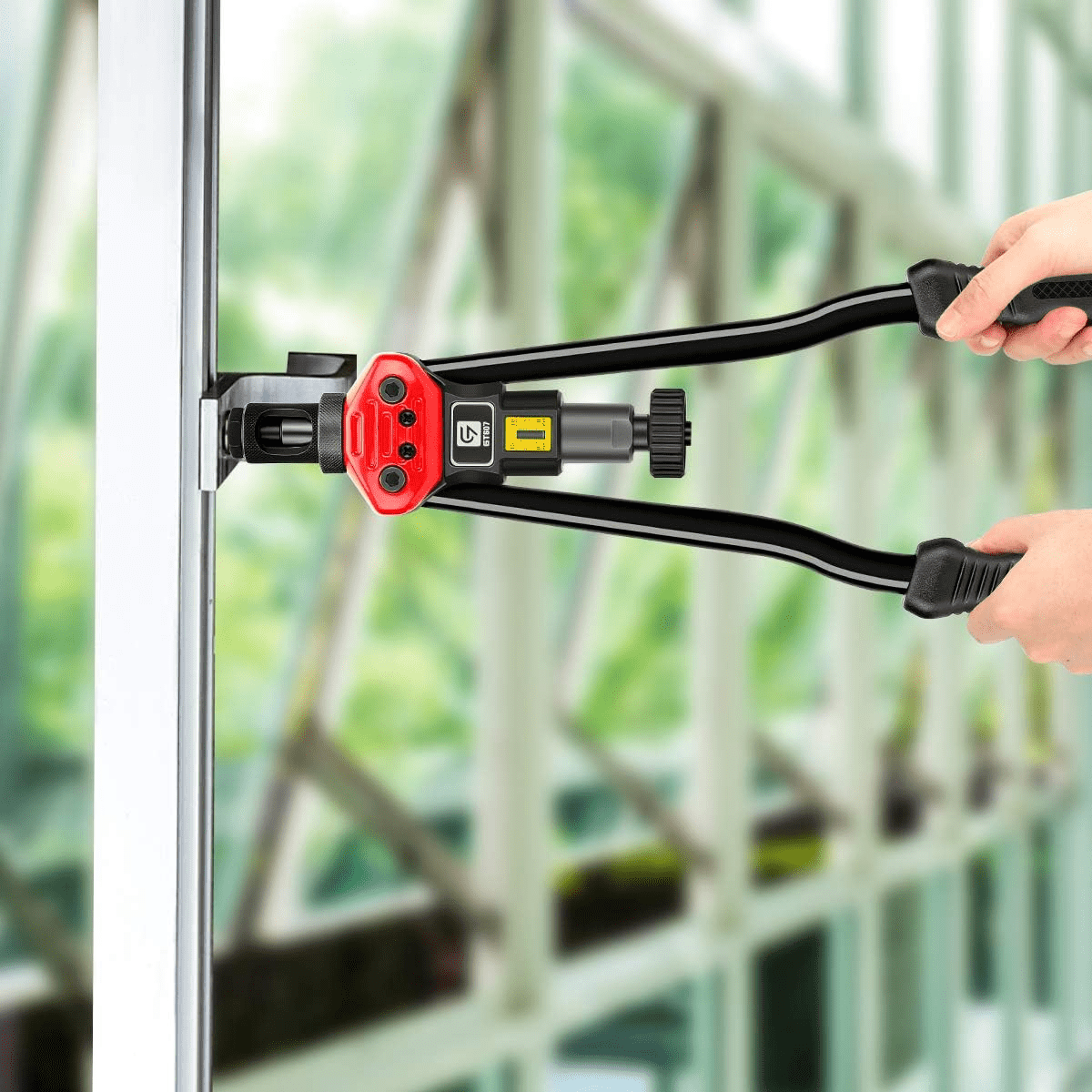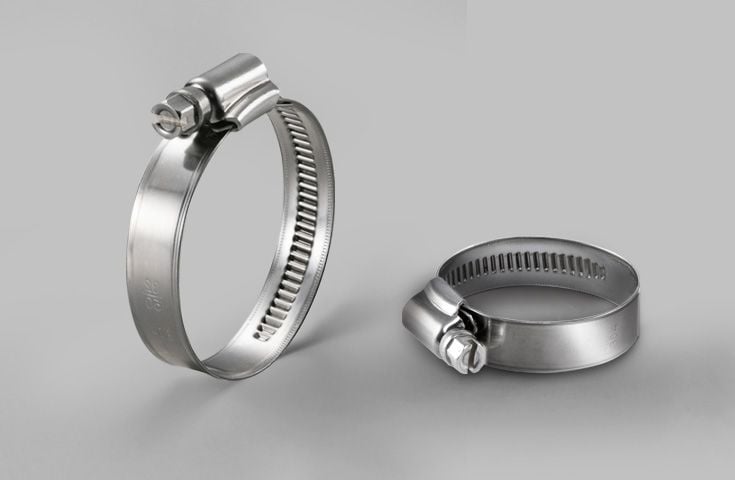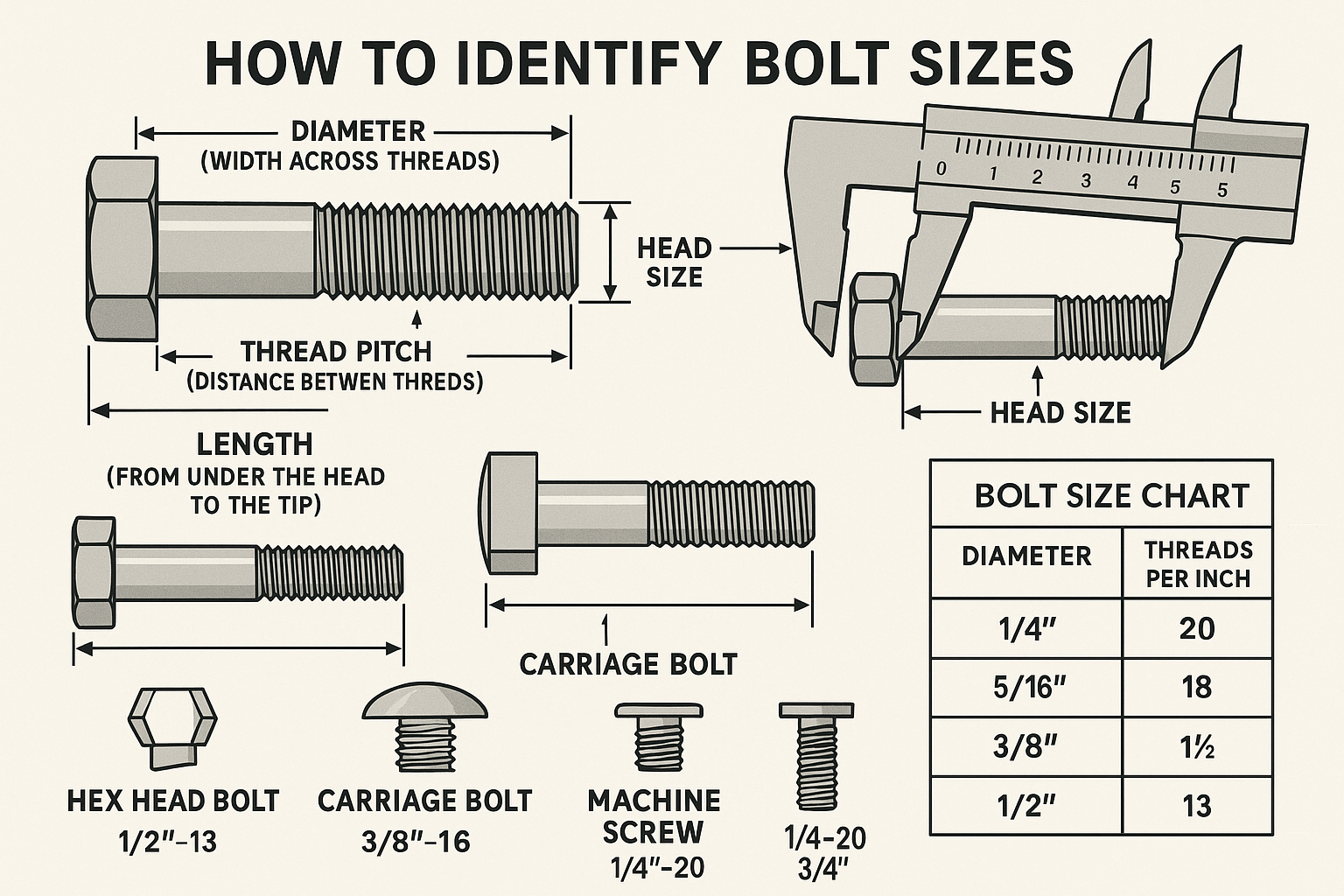Table of Contents
- Understanding Rivnuts and Their Applications
- Types of Rivnut Tools Available
- 6mm vs 10mm Rivnuts: Key Differences
- Selecting the Right Rivnut Tool for Your Needs
- HomeDIYer 16-Piece Rivnut Gun Kit Overview
- Step-by-Step Installation Process
- Common Issues and Troubleshooting
- Tool Maintenance and Care
- Frequently Asked Questions
Understanding Rivnuts and Their Applications
Rivnuts, also known as blind rivet nuts or threaded inserts, are unique fasteners that provide strong, reliable threads in materials where only one side is accessible. Unlike traditional nuts that require access to both sides of a workpiece, rivnuts can be installed from one side, making them ideal for countless applications where backside access is limited or impossible.
Key Takeaway: Rivnuts combine the benefits of rivets (one-sided installation) with the functionality of nuts (threaded fastening points), creating versatile solutions for various industries.
Common Applications for Rivnuts
Rivnuts find applications across numerous fields, including:
- Automotive Industry: Installing accessories, repairing threads, and securing components in hard-to-reach areas
- Furniture Manufacturing: Creating strong threaded points in hollow tubes and thin materials
- Aviation and Aerospace: Securing panels and components in aircraft structures
- Electronics: Mounting equipment in racks and enclosures
- Home DIY Projects: Creating sturdy mounting points for shelves, brackets, and various installations
When working with different materials and applications, the size of the rivnut becomes critical. 6mm and 10mm rivnuts are among the most popular sizes due to their versatility and strength characteristics.
Types of Rivnut Tools Available
Selecting the right rivnut tool begins with understanding the different types available on the market. Each type has its advantages and limitations, making them suitable for different usage scenarios and budgets.
Manual Rivnut Tools
Manual rivnut tools are the most common choice for DIY enthusiasts and occasional users. These tools operate through a hand-powered mechanism that typically involves squeezing handles or rotating a lever to set the rivnut in place.
The HomeDIYer 16-Piece Rivnut Gun Kit is an excellent example of a comprehensive manual tool that includes multiple mandrels to handle various rivnut sizes, including 6mm and 10mm.
Pneumatic Rivnut Tools
Pneumatic rivnut tools use compressed air to install rivnuts quickly and with minimal effort. These are preferred in professional settings where high volumes of rivnuts need to be installed regularly.
Hydraulic Rivnut Tools
Hydraulic tools offer the highest installation force, making them suitable for large or high-strength rivnuts. These are typically used in heavy industrial applications.
Battery-Powered Rivnut Tools
Cordless, battery-powered rivnut tools provide the convenience of pneumatic tools without the need for an air compressor. These are becoming increasingly popular in various professional settings.
| Tool Type | Best For | Pros | Cons | 6mm/10mm Compatibility |
|---|---|---|---|---|
| Manual | DIY, occasional use | Low cost, portable, no power needed | Requires physical effort, slower installation | Excellent with proper mandrels |
| Pneumatic | Professional, high-volume | Fast installation, minimal effort | Requires air compressor, less portable | Excellent with proper mandrels |
| Hydraulic | Industrial, heavy-duty | High installation force | Expensive, specialized use | Good, but may be overkill for these sizes |
| Battery-Powered | Professional, on-site work | Portable, no cords or hoses | Battery life limitations, higher cost | Excellent with proper mandrels |
6mm vs 10mm Rivnuts: Key Differences
Understanding the differences between 6mm and 10mm rivnuts is essential for selecting the right rivnut tool and achieving optimal results in your projects.
Size and Strength Considerations
The most obvious difference between 6mm and 10mm rivnuts is their diameter, which directly impacts their strength and load-bearing capacity.
| Specification | 6mm Rivnut | 10mm Rivnut |
|---|---|---|
| Thread Size | M6 (6mm) | M10 (10mm) |
| Typical Grip Range | 0.5mm - 3mm | 1mm - 6mm |
| Shear Strength (Steel) | Approx. 2,000-3,000 lbs | Approx. 5,000-7,000 lbs |
| Tensile Strength (Steel) | Approx. 1,500-2,500 lbs | Approx. 4,000-6,000 lbs |
| Hole Size Required | 6.2mm - 6.5mm | 10.2mm - 10.5mm |
| Common Applications | Electronics, light fixtures, automotive trim | Structural components, heavy fixtures, machinery |
Installation Force Requirements
The installation force required for 10mm rivnuts is significantly higher than for 6mm rivnuts. This is a critical factor when selecting your rivnut tool, as the tool must generate sufficient force to properly set the larger rivnuts.
Important: A rivnut tool that works perfectly for 6mm rivnuts may struggle with 10mm rivnuts if it doesn't provide enough mechanical advantage or installation force.
For manual tools, this typically means longer handles or a more efficient mechanism to multiply the applied force. For powered tools, it means adequate air pressure, hydraulic pressure, or motor torque.
Selecting the Right Rivnut Tool for Your Needs
Choosing the perfect rivnut tool requires considering several factors beyond just the size of rivnuts you'll be installing. Here's a comprehensive guide to help you make the right decision.
Key Selection Criteria
1. Rivnut Size Compatibility
Ensure the rivnut tool you select is compatible with both 6mm and 10mm rivnuts. Many tools achieve this through interchangeable mandrels or adjustable jaws.
2. Installation Force
Verify that the tool can generate sufficient force for 10mm rivnuts, which require significantly more installation force than 6mm rivnuts.
3. Ergonomics and Ease of Use
Consider how comfortable the tool is to use, especially if you'll be installing multiple rivnuts in a session. Look for features like comfortable grips and balanced weight distribution.
4. Build Quality and Durability
Invest in a tool made from quality materials that will withstand regular use. Steel construction is preferable for critical components.
5. Versatility and Accessories
Consider whether the tool can handle other rivnut sizes you might need in the future. Kits with multiple mandrels offer greater long-term value.
The HomeDIYer 16-Piece Rivnut Gun Kit addresses all these criteria with its comprehensive set of mandrels, robust construction, and ergonomic design that makes installing both 6mm and 10mm rivnuts straightforward.
 Manual vs Powered Tools for 6mm and 10mm Rivnuts
Manual vs Powered Tools for 6mm and 10mm Rivnuts
For most users working with 6mm and 10mm rivnuts, the decision comes down to manual versus powered tools.
Manual tools are generally sufficient for occasional use and smaller projects. High-quality manual tools with proper leverage can handle 10mm rivnuts without excessive effort.
Powered tools become worthwhile if you're installing numerous rivnuts regularly or if physical limitations make manual installation challenging.
Professional Tip: Even if you opt for a powered rivnut tool, having a reliable manual tool as a backup is always a good idea for those times when power isn't available or for quick, single installations.
HomeDIYer 16-Piece Rivnut Gun Kit Overview
The HomeDIYer 16-Piece Rivnut Gun Kit is specifically designed to handle a wide range of rivnut sizes, including both 6mm and 10mm rivnuts. This comprehensive kit provides everything needed for professional-quality rivnut installations in various applications.
Key Features and Benefits
| Feature | Benefit for 6mm/10mm Rivnuts |
|---|---|
| Multiple Mandrel Sizes | Includes specific mandrels for M6 and M10 rivnuts |
| Robust Construction | Steel construction handles high installation forces required for 10mm rivnuts |
| Ergonomic Design | Comfortable grip reduces fatigue during multiple installations |
| Portable Case | Keeps all components organized and protected |
| Comprehensive Accessories | Includes all necessary wrenches and installation aids |
Why This Kit Excels with 6mm and 10mm Rivnuts
The HomeDIYer kit stands out for several reasons when working specifically with 6mm and 10mm rivnuts:
- Optimized Mechanical Advantage: The tool's design provides sufficient leverage to install 10mm rivnuts without excessive force
- Precision Mandrels: Specifically engineered mandrels ensure proper grip and deformation for consistent results
- Durability: High-quality materials withstand the stresses of regular use with larger rivnuts
- Versatility: Beyond 6mm and 10mm capabilities, the kit handles numerous other sizes for future projects
"The HomeDIYer Rivnut Tool Kit has become my go-to solution for all threaded insert needs. It handles everything from small 6mm applications in electronics enclosures to robust 10mm installations in automotive frames with equal precision and reliability." - Mark T., Professional Mechanic
Step-by-Step Installation Process
Proper installation is crucial for achieving the full strength and reliability of rivnuts. Follow these steps for successful 6mm and 10mm rivnut installations with your rivnut tool.
Preparation Phase
Step 1: Select the Correct Rivnut Size
Choose between 6mm and 10mm rivnuts based on your application requirements. Consider the material thickness, load requirements, and thread size needed.
Step 2: Prepare the Installation Hole
Drill a clean, appropriately sized hole:
- 6mm rivnuts: 6.2mm - 6.5mm hole
- 10mm rivnuts: 10.2mm - 10.5mm hole
Step 3: Select the Correct Mandrel
Choose the mandrel that matches your rivnut size:
- M6 mandrel for 6mm rivnuts
- M10 mandrel for 10mm rivnuts
Installation Phase
Step 4: Thread the Rivnut onto the Mandrel
Screw the rivnut onto the mandrel threads until it seats firmly against the tool. Ensure it's straight and secure.
Step 5: Insert into the Prepared Hole
Place the rivnut into the pre-drilled hole, ensuring it sits flush against the material surface.
Step 6: Activate the Rivnut Tool
For manual tools: Squeeze the handles firmly and steadily until you feel or hear a "pop" indicating the rivnut has set.
For powered tools: Activate the tool according to manufacturer instructions until the installation cycle completes.
Step 7: Remove the Tool
Unscrew the mandrel from the installed rivnut. The rivnut should now be securely fastened in the material.
Pro Tip: When installing 10mm rivnuts, expect significantly more resistance than with 6mm rivnuts. Apply steady, firm pressure rather than jerky movements for best results.
 Common Issues and Troubleshooting
Common Issues and Troubleshooting
Even with the right rivnut tool, you may encounter issues during installation. Here are common problems and their solutions when working with 6mm and 10mm rivnuts.
| Problem | Possible Causes | Solutions |
|---|---|---|
| Rivnut spins in hole | Hole too large, insufficient grip range, improper installation | Use correct hole size, ensure proper tool operation, consider different grip range rivnut |
| Difficulty installing 10mm rivnuts | Insufficient tool force, wrong mandrel, material too thick | Verify tool compatibility, use correct mandrel, check material thickness against rivnut specifications |
| Stripped threads on mandrel | Cross-threading, worn mandrel, overtightening | Replace mandrel, thread carefully, don't overtighten before installation |
| Rivnut doesn't seat flush | Hole too small, debris in hole, insufficient installation force | Check hole size, clean hole, ensure complete tool operation |
| Tool handles difficult to squeeze (manual tools) | Lack of lubrication, misalignment, excessive force required | Lubricate moving parts, check alignment, verify rivnut size compatibility |
The HomeDIYer Rivnut Tool Kit includes replacement mandrels and comprehensive instructions to help troubleshoot and resolve common installation issues.
Tool Maintenance and Care
Proper maintenance of your rivnut tool ensures consistent performance and extends its service life, especially when regularly working with demanding 10mm rivnuts.
Regular Maintenance Routine
Cleaning
After each use, wipe down the tool to remove dirt, debris, and metal particles. Pay special attention to the mandrel threads and moving parts.
Lubrication
Apply a light machine oil to moving parts periodically. For threaded mandrels, use anti-seize compound to prevent galling and ensure easy rivnut removal after installation.
Inspection
Regularly check for:
- Worn or damaged mandrel threads
- Cracks in handles or frame
- Loose fasteners or components
- Signs of excessive wear on contact surfaces
Storage
Store your rivnut tool in a clean, dry environment. Keep it in its case if provided to protect it from damage and prevent loss of small components.
Mandrel Care Specific to 6mm and 10mm Sizes
The mandrels for 6mm and 10mm rivnuts experience significant stress during installation. Pay special attention to:
- Thread Inspection: Regularly check for worn, damaged, or crossed threads
- Proper Storage: Store mandrels separately to prevent thread damage
- Timely Replacement: Replace mandrels showing significant wear to ensure proper rivnut installation
Maintenance Tip: Keep spare mandrels for the sizes you use most frequently (6mm and 10mm) to avoid project delays when replacement becomes necessary.
Frequently Asked Questions
Yes, many rivnut tools are designed to handle multiple sizes through interchangeable mandrels. The HomeDIYer 16-Piece Rivnut Gun Kit, for example, includes specific mandrels for both M6 and M10 rivnuts, allowing you to work with both sizes using the same main tool body.
10mm rivnuts have approximately 2.8 times the cross-sectional area of 6mm rivnuts, requiring significantly more force to properly deform and set them. Additionally, the larger diameter creates more surface area that must be compressed against the host material. This is why it's crucial to ensure your rivnut tool has sufficient mechanical advantage or power to handle 10mm installations.
Manual rivnut tools require physical force to install rivnuts, while pneumatic tools use compressed air. For occasional use or smaller projects, manual tools are generally sufficient and more cost-effective. However, if you're regularly installing multiple 10mm rivnuts, a pneumatic tool can significantly reduce effort and installation time. The choice depends on your specific needs, budget, and usage frequency.
Check the manufacturer's specifications for the maximum rivnut size the tool can handle. Additionally, look for these indicators:
- Inclusion of an M10 mandrel with the tool
- Specifications listing compatibility with M10 or 10mm rivnuts
- Robust construction capable of withstanding high installation forces
- Longer handles or greater mechanical advantage in manual tools
If your current rivnut tool struggles with 10mm rivnuts, consider these solutions:
- Verify you're using the correct mandrel for 10mm rivnuts
- Ensure the tool is properly lubricated and in good condition
- Check that you're applying steady, firm pressure rather than jerky movements
- Confirm the rivnuts are the correct specification for your application
- If problems persist, consider upgrading to a tool specifically designed for larger rivnuts, like the HomeDIYer kit which is engineered to handle 10mm installations effectively.
Yes, the host material affects rivnut installation:
- Soft materials (aluminum, plastic): May require less installation force but need careful attention to avoid deformation
- Hard materials (steel, stainless steel): Require more installation force and high-quality tools
- Thin materials: Need rivnuts with appropriate grip range to avoid bulging or distortion
- Laminated or composite materials: May require special techniques to prevent delamination
Final Recommendations
Selecting the right rivnut tool for 6mm and 10mm rivnuts requires careful consideration of your specific needs, application requirements, and budget. For most users who need to work with both sizes, a high-quality manual tool with interchangeable mandrels offers the best balance of capability, cost-effectiveness, and versatility.
The HomeDIYer 16-Piece Rivnut Gun Kit stands out as an excellent choice, providing specialized mandrels for both 6mm and 10mm rivnuts along with the durability and ergonomics needed for professional results.
Remember that proper technique, regular maintenance, and using the correct accessories are just as important as selecting the right tool. With the information in this guide, you're now equipped to make an informed decision and achieve successful rivnut installations in all your projects.








